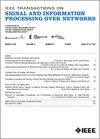利用动态传播结构、互动网络和内容的多视角谣言检测框架
IF 3
3区 计算机科学
Q2 ENGINEERING, ELECTRICAL & ELECTRONIC
IEEE Transactions on Signal and Information Processing over Networks
Pub Date : 2024-01-10
DOI:10.1109/TSIPN.2024.3352267
引用次数: 0
摘要
社交网络(SN)是近年来最重要的信息传播媒介之一。然而,有时社交网络也会被用来传播谣言,从而引发许多社会问题。为了自动检测谣言,人们做了很多研究。以往的研究大多利用单一模式,尤其是文本内容,从而忽略了谣言的传播结构和互动网络等其他模式。然而,用户与推文的交互网络以及推文的传播结构可以为谣言检测提供重要信息。在本文中,我们提出了一个多视角谣言检测框架(MV-RD),它能同时捕捉一条推文的多个视角,包括传播结构、互动网络和内容。以往考虑传播结构的研究大多使用信息扩散结束时的最终传播结构。很少有相关研究人员考虑过传播结构的动态演化。在本文中,我们利用传播结构随时间的分区,设计了一种传播结构模型,可以学习谣言的传播结构随时间的演变。此外,我们还利用了谣言互动网络(对推文的一级互动进行建模)的特点,使用互动网络模型检测谣言。此外,我们还学习了内容模型,利用推文内容来检测谣言。最后,这三个模型被融合到一个统一的框架中。结果表明,在谣言检测任务中使用多种视图是有效的。与其他现有方法相比,即使不使用推文内容,所提出的框架也能更有效地检测谣言。通过单独利用传播结构模型、结合传播结构和交互网络模型以及结合所有三种模型,所提出的方法分别达到了 77.82%、85.65% 和 88.26% 的准确率。这些结果优于以往的方法,同时也证明了该方法比现有方法更早发现谣言的能力。本文章由计算机程序翻译,如有差异,请以英文原文为准。
A Multi-View Rumor Detection Framework Using Dynamic Propagation Structure, Interaction Network, and Content
Social networks (SN) have been one of the most important media for information diffusion in recent years. However, sometimes SN are used to spread rumors, which results in many social issues. Many researches have been done to detect rumors automatically. Previous works mostly exploit a single modality, especially the textual content, thus ignoring other modality such as the propagation structure and the interaction network of the rumor. However, the interaction network of users and tweets, and the propagation structure of a tweet, can provide important information to be used in rumor detection. In this paper, we propose a multi-view rumor detection framework (MV-RD) which captures multiple views of a tweet simultaneously including propagation structure, interaction network, and content. Previous works that considered propagation structure, mostly have used the final propagation structure at the end of information diffusion. Few related researchers have considered the dynamic evolution of propagation structures. In this paper, using partitioning of propagation structure over time, we have designed a propagation structure model that learns the evolution of the propagation structure of rumors over time. Besides, we take advantage of features of the rumor interaction network (modeling first-level interactions of tweets) for detecting rumors using the interaction network model. Also, a content model is learned to detect rumors using the tweet contents. Finally, these three models are fused into a unified framework. The results show the effectiveness of using multiple views in the rumor detection task. The proposed framework can detect rumors more effectively than other existing methods, even without using the tweet content. The proposed method achieved accuracies of 77.82%, 85.65%, and 88.26% by leveraging the propagation structure model alone, combining the propagation structure and interaction network models, and incorporating all three models, respectively. These results outperformed previous approaches and also demonstrated the method's capability to detect rumors earlier than existing methods.
求助全文
通过发布文献求助,成功后即可免费获取论文全文。
去求助
来源期刊

IEEE Transactions on Signal and Information Processing over Networks
Computer Science-Computer Networks and Communications
CiteScore
5.80
自引率
12.50%
发文量
56
期刊介绍:
The IEEE Transactions on Signal and Information Processing over Networks publishes high-quality papers that extend the classical notions of processing of signals defined over vector spaces (e.g. time and space) to processing of signals and information (data) defined over networks, potentially dynamically varying. In signal processing over networks, the topology of the network may define structural relationships in the data, or may constrain processing of the data. Topics include distributed algorithms for filtering, detection, estimation, adaptation and learning, model selection, data fusion, and diffusion or evolution of information over such networks, and applications of distributed signal processing.
 求助内容:
求助内容: 应助结果提醒方式:
应助结果提醒方式:


